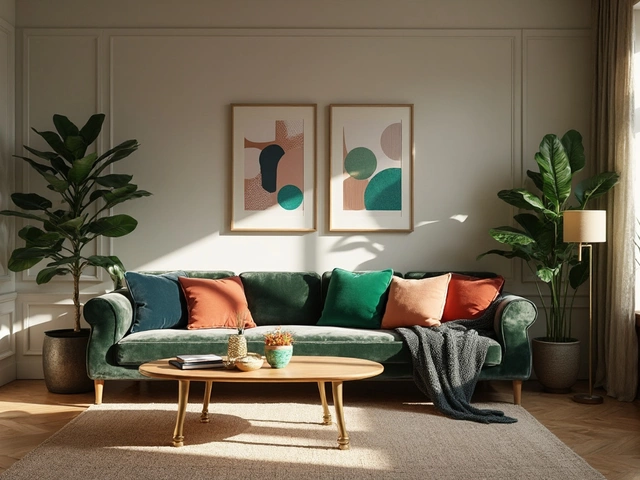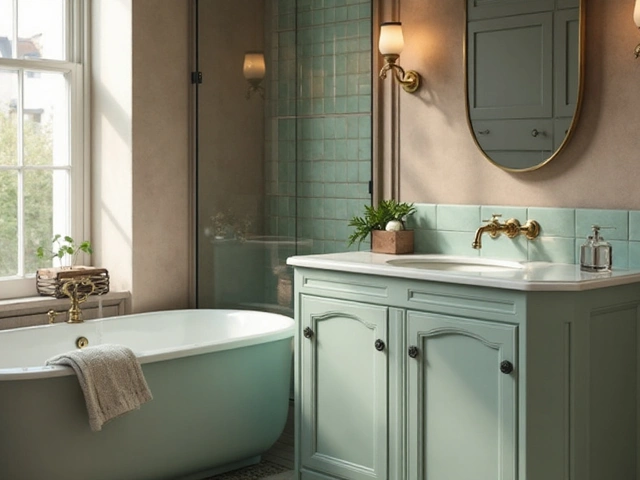How Much Should a Couch Really Cost?
When you walk into a furniture shop, the price tags can feel random. One couch is £250, the next is £2,000. The truth is, price depends on a handful of clear factors, not luck.
Size and Shape Matter
The most popular 3‑seater sofa sits around 84 inches long. Because it fits most living rooms, manufacturers can produce it in larger batches, which keeps the price lower. A sectional or a deep‑seat couch needs more material and labor, so expect a bigger price tag. If you’re okay with a compact 2‑seater or a snug love seat, you’ll usually stay under £500.
Materials Drive the Bottom Line
Fabric vs. leather is the biggest price divider. Synthetic fabrics like polyester or microfiber can be budget‑friendly at £200‑£600. Natural fibres such as linen or high‑quality cotton push the cost up, often past £1,000. Real leather is the premium lane; genuine leather sofas often start around £1,200 and climb quickly based on grain and finish.
Frame construction also counts. A solid hardwood frame lasts longer and costs more than a particle‑board base. Look for kiln‑dried oak or beech if you want durability without splurging on exotic timber.
Where You Buy Changes the Bill
Big chains and online stores can offer lower prices because they buy in bulk and cut showroom costs. Smaller boutique shops may charge more, but they often give personalized design help and higher‑end fabrics. Check the return policy – a cheap couch with a strict no‑return rule can become a hidden expense.
Don’t forget delivery fees. Some retailers include free delivery on orders over a certain amount, while others charge per mile. Adding a delivery fee of £50‑£100 can tilt the overall price, so factor it in when you compare.
Smart Ways to Keep Costs Down
1. Shop the sales calendar – seasonal clearances in January and July often bring 30‑50% off.
2. Consider a knock‑down sofa. These come flat‑packed and require assembly, but the savings can be significant, often £150‑£300 less than pre‑assembled models.
3. Look for outlet or overstock sections. Retailers sometimes list perfect‑condition sofas with minor blemishes at a discount.
4. Use a cushion set to refresh an older sofa. A new arrangement of cushions can give the look of a brand‑new couch for a fraction of the price.
What Price Is Right for You?
Start by measuring the space. A couch that’s too big will force you to buy a different coffee table or skip a rug, adding hidden costs. Next, decide on the primary use – a family lounge needs a sturdy frame and easy‑clean fabric, while a formal sitting area can afford a more delicate material.
Set a realistic budget range, then narrow down options that fit inside it. Compare at least three models, checking the total cost including delivery, taxes, and any assembly fees.Finally, read reviews. Real‑world feedback on comfort, durability, and after‑sales service can save you from a purchase that looks cheap but ends up costing more in repairs or replacement.
By understanding what influences couch prices, you can shop with confidence, avoid surprise costs, and bring home a sofa that matches both your living room and your wallet.

Average Couch Markup: Insider Tips to Save Big on Sofas
Find out the average markup on couches, how retailers set sofa prices, and where you can score the best deals. Get smart, actionable tips for sofa shopping.
Categories
- Storage (27)
- Bathroom (18)
- Sofas (15)
- Curtains (15)
- Home Decor (12)
- Bedding (11)
- Kitchenware (11)
- Cushions (11)
- Mirrors (10)
- Rugs (9)



